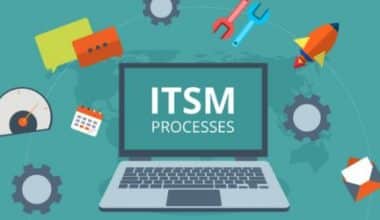Customers have more expectations than ever before in this instant gratification era. In order to keep up with escalating customer demands, companies are pouring more resources into continuous Voice of the Customer program, survey, and analysis. Any customer experience (CX), research (R&D), or marketing (Mktg) executive will tell you that the days of having a monologue with potential customers are over. Voice-of-customer programs present a massive possibility for driving loyalty and greater sales, thus market leaders are now altering their listening and reaction mechanisms at a faster rate. U.S. companies lose an annual estimated $83 billion due to client defections and uncompleted transactions; also, unfavorable customer experiences are twice as likely to be shared as positive ones. In addition, listening to customers is essential for increasing profits and maintaining loyal clientele. You must understand their perspectives and listen to the “Voice of the Customer” (VoC).
What Is the Voice of the Customer?
A voice of the customer program involves gathering, analyzing, and acting on information about the preferences, expectations, and dislikes of your customers. Voice of customer data focuses on customer and product experiences in an effort to identify what matters most to and has the greatest influence on the customer.
Furthermore, Voice of Customer offers an “unparalleled insight into what your customers really want from your business and product” because the input comes straight from your prospects, according to MIT’s excellent description. You can modify your product or customer experience to meet the demands and preferences of your customers if you have a clear understanding of what they want.
Many companies think they have a voice of customer program in place because they conduct surveys and collect feedback. A Voice of the Customer program actually encompasses the full process of gathering consumer feedback in one location and evaluating the data to determine what matters most to customers and why.
The last step is making sure the appropriate individuals in your business are aware of these insights and, most importantly, are able to put them into practice. Every employee in the company, from product development teams to customer service representatives, can make decisions that are focused on the needs of the customer thanks to a successful voice of the customer program.
What Are the 4 Steps of VOC?
You can’t keep a company afloat without clients who are happy. You do everything for them. Think of the advantages of putting customers in charge, given that they are the ones who affect your bottom line and act as brand ambassadors.
That’s exactly what a program like “Voice of the Customer” does. The correct information can be gleaned from the people who have the closest ties to your brand. Better, more successful company decisions can be made with that information in hand.
Here is a look at what you need to do to launch a successful VoC program.
#1. Set up a VOC Plan
You’ve probably heard the phrase “start with the end in mind” a thousand times. In other words, build your objectives on what it is that you hope to accomplish. It’s important to think about the relationship between your brand and business goals and your VoC while developing a voice of customer program. Key business challenges, such as financial effects, driving culture change, and product/service modification planning, must be identified and prioritized.
After deciding on a course of action, planning is the next step. Perform an audit first. Knowing this will aid you in making informed decisions about resources and potential financial investments.
During the audit, take stock of the data at your disposal, the vendors you work with, and the information you already possess. Assess whether or not the information you have at your disposal is sufficient. Do you already have access to the relevant information, but lack a strategy for making it useful? Do you have problems gathering information in general? A thorough inventory can be made with the aid of an audit.
The next step is to create a comprehensive strategy of action. Having an extensive plan for putting it into action will guarantee that you haven’t forgotten anything. In order to determine the:
- To what extent do employees, teams, and stakeholders participate in the Voice of Customer program?
- Which person or group owns which items?
- How do you intend to put your strategy into motion?
After you’ve answered all of these questions, you may allocate responsibilities to the appropriate people and prepare for the launch.
Starting feedback is exciting. However, you need the plan to respond to customer feedback if you request it. In an ideal world, all clients would give you favorable feedback. Your unhappy customers will also leave feedback.
In addition, close the loop before collecting inputs.
#2. Obtain Backing From Superiors
You’ve done the hard work of setting goals, conducting an audit, and developing a strategy for carrying out your plans and reacting to feedback. The next step is to win over the company’s upper management in order to obtain the necessary funding and buy-in.
Tips on how to win over the C-suite:
- Demonstrate how it will help your company. You already know that your organization needs a robust VoC program because you’ve done your homework on the subject. Provide evidence for the executive board when making your argument. Please elaborate on the benefits of VoC programs if rivals are already reaping their benefits. Identify the points where your service is falling short for your clients. Also, demonstrate to them how VoC will enhance marketing efforts, increase sales, and decrease customer churn.
- Find an organizational sponsor. Having a vocal supporter in high-level meetings can accomplish a lot. Find a contact who cares about client satisfaction and talk to them. Your VoC program objectives will be discussed at corporate meetings, and you’ll receive bottom-up support if you can win over the C-suite.
- Bring in the relevant people. Aside from the management team, many others (such as investors) have input into corporate decisions. Once you’ve received approval from upper management, you should collaborate with that group to win over the project’s key players. When everyone is on the same page, you can do more.
Keep in mind that your flawless plan will swiftly fall apart without the backing of the executive team.
#3. Set up a VOC System
Yes! Executive support has been granted. Now is the time to spend money wisely by purchasing high-quality equipment.
One of the most crucial steps in creating a successful VoC program is selecting an appropriate survey tool. With the correct survey tool, you can make sure your surveys are accessible via email, mobile devices, and desktop computers. There is a greater possibility that customers will participate in your surveys. Moreover, you are aware of your ability to rapidly collect data and transform it into useful insights.
When deciding on a voice of customer survey tool, keep these items in mind. As a tool, you should:
- Assist you in seeing data through interactive dashboards and concise reports
- Give examples and advice for making excellent surveys
- Improve your client information by syncing it with your CRM.
- Connect with a leading email service for simple sharing.
- Use employee questionnaires to get a feel for the staff’s opinions, too.
- Facilitate communication and cooperation between divisions.
Furthermore, there are numerous channels to choose from when disseminating a voice of customer survey. However, not every approach is the same. A generic survey at the point of sale is likely to yield lower-quality feedback than an email-delivered tailored survey.
You can do the following with the aid of an external email integration:
- Make sure your survey and email look like they belong together
- Send HTML emails with embedded surveys
- Make sure your survey can be easily accessed on mobile devices.
- Establish conditions for timely dispersal to be carried out automatically.
Campaign Monitor’s GetFeedback integration simplifies survey email design. Export the message to send an HTML email from your email provider.
Using the export tool to incorporate a survey question into your email lets respondents start the survey in their inboxes. One-touch email questionnaires boost feedback.
#4. Construct a Voice of Customer Survey
Companies want answers to all their questions at once, thus Voice of the Customer surveys tend to be lengthy and comprehensive. However, 15 questions are impossible unless you hire a market research agency or offer substantial incentives to customers.
Everyone has been on the receiving end of the seemingly never-ending voice of customer survey questionnaires. You respond mindlessly, if at all, to their banal and useless questions. That’s not how you create mind-blowing discoveries. Also, read EMPLOYEE FEEDBACK: Definition, Examples & When to Use Them.
Here are some suggestions for improving your customer feedback collection:
- Just focus on the basics. In general, shorter surveys are preferable. Customers’ response times of a few minutes or fewer will increase your response rates. More information leads to better decision-making.
- Don’t ask queries tinged with prejudice. Survey participants are susceptible to subtle manipulation. The reactions of others can be greatly affected by the words and phrases we use.
- Select the appropriate forms of inquiry. Do you require a certain kind of criticism? In what ways do you plan to track changes over time? After narrowing in on your most important indicators for measuring the customer experience, you’ll know what kinds of questions to ask.
- Increase your response rates through optimizing. Previewing your survey on mobile devices, checking that all content is legible, and following best practices for survey design should all be done before you send out your survey. Make sure you’ve optimized the survey email as well.
What Is the Voice of the Customer Examples?
Let’s look at a few real-world examples of how businesses in a variety of sectors are using the VOC to learn more about their customers and the expectations they have of them.
#1. VoC in Banking
There is a lot of competition in the banking sector, so financial institutions have to evolve frequently to meet the needs of their customers and stay ahead of the competition. Since competitors are always coming up with novel approaches to woo away clients, it is difficult for businesses to maintain a low churn rate in this industry.
Using VoC, the Johannesburg bank analyzed customer input across all of its official channels and social media in an effort to lower its customer turnover rate and maintain competitiveness. To do this, they launched a hashtag-based campaign asking customers to share their thoughts on the bank, both positive and negative.
With the help of this campaign, they were able to collect two million individual pieces of feedback, all of which were then sorted into bespoke categories based on the specific banking service they pertained to (e.g., mobile banking, fees, and charges, etc.). Then, sentiment analysis was performed using Named Entity Recognition (NER) by assigning scores based on how someone felt about each comment. Incorporating these ratings into decision-making allowed the bank to zero in on the most pressing problems.
#2. VoC in Insurance
Insurance company Lawley in New York City implemented a Voice of Customer initiative by conducting NPS® (Net Promoter Score®) surveys to get client input. They were able to compare their NPS® score in different locations by conducting relationship NPS® surveys to gauge how their customers felt about the company’s brand as a whole. Many problems with the client journey were discovered by the company as a result. To avoid losing too many accounts, they used this data to zero in on potential sources of distress among their clientele and afterward pursue resolutions with them. VoC assisted Lawley in enhancing customer service and decreasing client turnover.
#3. VoC in Subscription
Subbly is an online store that prioritizes subscriptions and has implemented VoC to improve its offerings. They did this by establishing a special feedback area on their website. In order to gauge subscribers’ satisfaction with various pricing tiers, they frequently conduct satisfaction surveys. Subbly’s product roadmap and feature decisions are informed by consumer feedback gleaned via continuous data collection.
#4. VoC in Primary Healthcare
In Saudi Arabia, Nahdi Medical is one of the largest medical facilities available. They took us off a VoC program by conducting surveys and analyzing the results in online discussion groups. After collecting the data, analysts used techniques like sentiment analysis and text analytics to classify the responses. After sorting the comments into relevant groups (depending on factors like quality, ease of use, and cost), we were left with a comprehensive picture of Nahdi’s efficiency. This let Nahdi Medical zero in on areas of poor customer experience and consumer frustration.
Voice of Customer Survey
Do you really want to know what customers are saying? And by listening, we don’t just mean verifying the information they provide you. The reality is that very few organizations are. Only 14% of companies, according to a recent Gartner marketing survey, have a complete picture of their customers. These insights can be gathered through a variety of methods, such as customer surveys or focus groups. In reality, conducting a voice-of-the-customer survey is one of the most common and straightforward approaches to understanding how customers feel about and engage with your digital platforms.
What Is the Voice of a Customer Survey?
A voice of the customer survey, sometimes known as a VoC survey, is a questionnaire designed to elicit customer opinions and comments. Quantitative and qualitative insights on the customer experience, online trips, and other key customer touchpoints are commonly included in the data. They are prevalent in online mediums like blogs, smartphone apps, and email marketing.
Furthermore, in order to create a more customized, seamless experience for their clients, businesses today rely heavily on data collected from their clientele.
To clarify, a voice of the customer survey is not the same as a voice of the customer program. The Voice of the Customer (VoC) program, of which a VoC survey is a part, also includes the gathering of VoC data, as well as its analysis and implementation.
Also, being the primary method of collecting VoC information, it is an essential component of your overall program.
Why Conduct a Voice of Customer Survey?
Customers want to give feedback and they have something to say. Through “voice of the customer” surveys, you can collect feedback from site visitors about their experiences with your company. It’s safe to assume that the customers whose opinions you value the most will be the ones to share them with you in their feedback. Your “promoters” and “detractors” are equally important to your success since they can assist you to see and address your blind spots.
In addition to gathering useful information from your most active clients, a voice of the customer survey can help your business proactively engage with the rest of your site’s users. A new group of customers can be contacted and surveyed about their experiences, for instance, using behavior-triggered VoC surveys.
The nature of the data being gathered is also a point of discussion. In contrast to the purely quantitative data that can be obtained from tools like Google Analytics, VoC surveys can also provide valuable qualitative information about how customers are interacting with a website. With sentiment as an additional ingredient, businesses can learn more about their clients’ inner lives.
How Do You Conduct the Voice of the Customer Survey?
Understanding who your customers are is crucial to your company’s survival in the modern marketplace. Companies that invest in learning their consumers’ likes, dislikes, and pain points will always be ahead of the competition.
Voice of the customer survey can be conducted in a variety of methods by different companies. We’ll go over some of the more common methods of study, but in practice, it’s not uncommon to combine several to get a more complete picture of your target audience.
#1. Customer Interviews
One method of collecting Voice of Customer information is through customer interviews. Even while conducting interviews takes time, they frequently yield insightful information.
Also, going to the customer and talking to them in depth opens the door to more specific, in-depth research. You can randomly interview customers, interview a statistically significant subset of customers, or randomly interview all customers.
Interviewers, whether face-to-face, over the phone, or over video chat, have the unique chance to go further into the customer’s comments and glean insights that may be missed using other methods of Voice of the Customer analysis.
If a customer mentions having trouble with a certain feature of your product, for instance, the interviewer can ask follow-up questions to learn more about the nature of the issue, its root causes, and any potential solutions.
Furthermore, buyers frequently consider this form of interaction to be the most individualized, making it a possible chance to cultivate personal ties with clients.
#2. Pay Attention to Online Platforms
Social media can be useful for gathering customer feedback and input during the VoC stage. Social media interactions are typically less formal, more interactive, and more real-time than email or phone calls.
The potential for social listening is also facilitated by the use of social media. Customers’ interactions with your brand on social media are a great source of voice of customer data, but social listening is an even more potent source.
Listening in on consumer conversations about your company and its offerings while they don’t interact with you directly can reveal insights into their true opinions. Social listening, like surveys, can help you zero in on the types of clients you want to talk to for more in-depth Voice of the Customer analysis.
Furthermore, social listening does not belong to just the most popular social media websites.
#3. Listen to the Recording of Customer Calls
Any calls your team makes to customers, whether they are sales calls, demo calls, support calls, or anything else, are a gold mine for Voice of the Customer Information. You should expect to get insightful reviews wherever customers are willing to put in an effort to learn more about your company by talking to you on the phone.
Customers who call the company are typically one of three types:
- Complete satisfaction with your business.
- Unhappy in your company greatly.
- Very curious about purchasing your offering.
All three include (typically) in-depth, one-on-one exchanges with enthusiastic, involved clients.
Both broad and specific insights can be gleaned by reviewing these exchanges. In addition to spotting overarching patterns in customer comments (both negative and positive), you can also drill down into the specifics of each interaction to learn even more.
In addition, you can collect VoC analysis using data you currently have, since you are probably recording client calls.
#4. Organize Discussion Sessions
Like customer interviews, focus groups work best in person. The main distinction is that in focus groups, multiple customers are surveyed all at once rather than just one.
A customer group meets, led by an appointed moderator. After that, the host guides a conversation about the company, its products, or its industry, which is often an open forum.
One of the finest ways to gather information about customers’ perspectives is through focus groups, which allow for freer-form talks and provide insights your organization might have ignored otherwise.
Furthermore, the interaction between customers can serve to elicit agreement and additional depth that may be missed by other research methods. When additional feedback is necessary, such as customers’ impressions of a specific new product or their thoughts on branding or marketing, focus groups can be helpful.
#5. Provide a Means for Customers to Voice Their Opinions
It’s always a good idea to have a feedback form ready for customers to use, whether or not you’re actively soliciting Voice of the Customer feedback. This is distinct from the Customer Support department, yet it can provide essential insight into your consumers’ perceptions of your brand and its offerings.
A feedback form, which can be hosted on your website, gives customers a convenient way to provide constant input. That’s helpful because it provides unasked-for input; each client who fills out a survey did so because they were moved to do so by their own experience, good or bad.
Even if you aren’t looking for them, rising trends in the Voice of the Customer can be spotted with the use of feedback forms.
Voice of Customer Analysis
A Voice of the Customer analysis program is a systematic method for analyzing the results of VoC surveys. The goal of a Voice of the Customer analysis program is to monitor customer feedback in order to formulate a strategy for enhancing the service provided to existing and potential customers.
In a Voice of Customer decisions, data analysis is the most crucial stage.
The above methods and inquiries should help you gain some useful understanding. The collected information must now be analyzed. Here‘s how to get started.
#1. Put Together a Quick Resource Document to Store Your Research
Apply the findings from your analysis of customer feedback to your buyer personas to reflect emerging patterns in consumer behavior and preferences. This provides you with a more in-depth understanding of your potential customers.
#2. Consider the Participation Rate or the Number of Responses as a Metric for Program Performance
If just 40 people responded to a survey after it was sent out to 200 people, you might want to reconsider your approach. Reaching out via social media may be more effective than polls with a younger demographic.
#3. Develop a Strategy
Your plan’s aesthetic will change depending on the prevailing ideas and tendencies you uncover. If you have gotten comments or emails asking for a live chat widget for your website, you should investigate purchasing live chat software.
#4. Share Your Findings and Next Steps With the Group
Putting the presentation last is crucial. Instead of discouraging the team with bad observations, you will have a plan to fix things.
When you combine the findings with a plan of action, you increase the likelihood that your team will follow your instructions.
Why the Voice of the Customer Is Important
Using consumer feedback, companies can make improvements to their offerings that will keep customers happy and spending money. VoC’s primary goal is not data collection but rather data analysis. Why? Because it’s important to identify the source of consumer complaints if you already know there are issues. On the other hand, if you discover that a specific segment of your target audience enjoys using your product, you should investigate why.
Voice of the Customer isn’t just about surveys and crossing your fingers for the positive feedback. If you want to be a world-class gymnast and pay a lot for training, your coach should modify your form. The reason is: development is impossible without criticism. Best practices for gathering Voice of Customer feedback recommend asking thoughtful follow-up questions rather than baiting respondents with the promise of praise (which is still valuable, as we’ll see). Do you get complaints from buyers about the cost? Is it hard for them to implement your product? Do they find your service relaxing, or do they find it stressful? Although the feedback may not be entirely positive, it does provide valuable insights that motivate action.
A company that values its VoC program will pay attention to all of its customers’ feedback, use the information to make modifications depending on what it learns, and grow as a result. Paying close attention and acting swiftly can smooth over bumps for prospective consumers and earn instant value from satisfied clients. Companies without a Voice of the Customer strategy miss opportunities to profit from happy customers and satisfy unhappy ones. The former can open up new avenues of profit, while the latter is crucial in lowering customer attrition rates. Customers are highly sensitive to how they are treated, both positively and negatively.
Conclusion
In conclusion, to increase customer happiness and loyalty, start a “Voice of the Customer” program. By spending money on innovations that help your business stand out and expand, you can become a pioneer and industry hero.
You can’t presume you know what the customer wants unless you ask them directly. If you want to keep ahead of the competition and provide your customers with what they want, you need to listen to what they have to say and quickly respond to their feedback.
Voice of Customer FAQs
What are VOC functions?
The customer’s requirements, wants, expectations, and preferences are the focal point of the voice of the customer (VOC) aspect of the customer experience. The level of satisfaction a company’s customers feel with their interactions with the company is a major competitive advantage.
What is VOP Six Sigma?
The term “Voice Of The Process” (VOP) refers to how a process conveys its potential to deliver results that satisfy a client’s goals, needs, and expectations.
Similar Articles
- EMPLOYEE ENGAGEMENT: Ideas, Activities & Importance
- HOW TO MAKE MONEY FAST AT HOME: Best 2023 Practices & Tips
- CRUCIAL BUSINESS QUESTIONS for Small & Large Businesses 2023
- Hybrid Work Survey: Survey Questions






